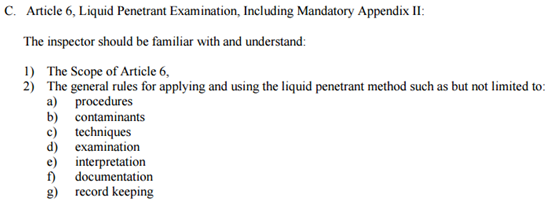By Eng. Carlos F Molina
Liquid penetrant examination is a NDE technique used many situations. It is an effective means for detecting discontinuities which are open to the surface of nonporous metals and other materials. Typical discontinuities detectable by this method are cracks, seams, laps, cold shuts, laminations, and porosity. In fillet welds of big size (you define big size), it can be used in several stages to make an approximation to a volumetric NDE. It is better used if applied to the root pass of containment welds.
The Body of Knowledge for the API 653 exam (there is a new BOK here) says the following:
By Eng. Carlos F Molina
Hi. Following two months and a half of a new job in Panama, I haven´t been so atentive to my website. I am again working for a contractor, meaning I have almost no time at all to update this site. I am usually void of energy because of all of the work that needs to be done. I hope that changes in the near future. By now, I am trying to retake writing in apiexam.com and to really commit to an schedule. Even when I didn´t write in a long time, the number of people that found value in my content grew (I have 255 suscribers now) in the past 2 and a half months.
Last time, we talked about Ultrasound according to Article 23 Ultrasonic Standards, Section SE–797, only things related to the Body Of Knowledge. This time we will review the use of ultrasound in tanks.
INTRODUCTION
Ultrasonic testing, I think, is going to replace RT as a mean of inspecting welded joints in tanks, because of its many advantages, like reducing hazards and downtime associated with radiography.
By Carlos F Molina
In the Body Of Knowledge for the API 653 exam, Ultrasonic Testing is one of the smallest parts that needs to be studied. This is what the Body Of Knowledge says you need to get:
E. Article 23, Ultrasonic Standards, Section SE–797 only – Standard practice for measuring thickness by manual ultrasonic pulse-echo contact method:
The inspector should be familiar with and understand;
1. The Scope of Article 23, Section SE-797,
2. The general rules for applying and using the Ultrasonic method
3. The specific procedures for Ultrasonic thickness measurement as contained in paragraph 7.
